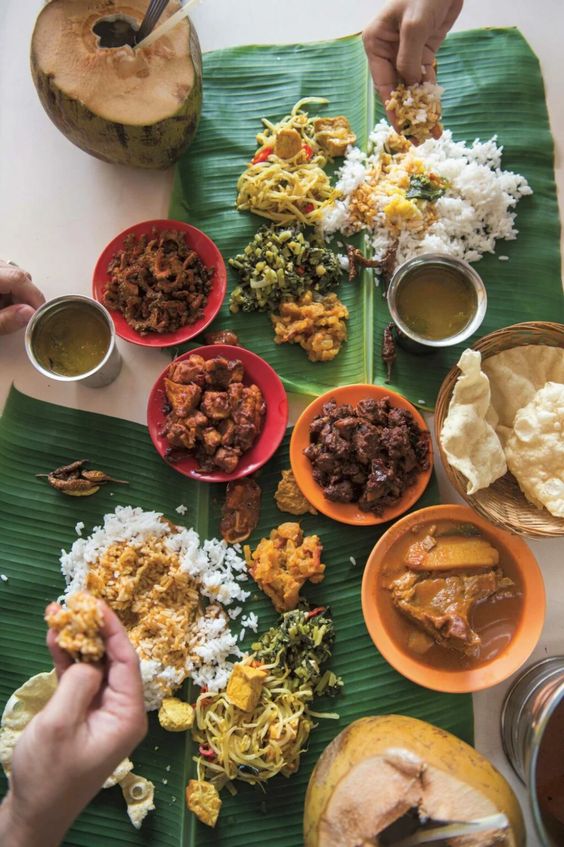Asia is a continent renowned for its rich cultural heritage, breathtaking landscapes, and vibrant culinary scene. From spicy curries to savory street foods, Asian cuisine offers a diverse array of flavors and ingredients that are sure to tantalize your taste buds and leave you craving more. For the adventurous foodie, Asia is a paradise brimming with exotic delicacies waiting to be discovered. Here are 10 must-try exotic foods that will take your culinary journey to new heights:
- Balut (Philippines): A Filipino delicacy, balut is a fertilized duck embryo that is boiled and eaten directly from the shell. Although it may sound intimidating to the uninitiated, balut is a beloved street food in the Philippines, prized for its unique texture and rich flavor. It is often enjoyed with a sprinkling of salt and vinegar for added zing.
- Durian (Southeast Asia): Known as the “king of fruits,” durian is a tropical fruit with a distinctive odor that has been likened to rotten onions or sewage. Despite its strong smell, durian is prized for its creamy texture and sweet, custard-like flavor. It is often enjoyed fresh or used in a variety of desserts and savory dishes.
- Stinky Tofu (Taiwan): Stinky tofu is a fermented tofu dish that is popular in Taiwan and other parts of Asia. It is made by fermenting tofu in a brine made from milk, vegetables, and meat for several days or weeks, resulting in a strong odor that some find off-putting. However, stinky tofu has a mild and slightly sweet flavor and is often served deep-fried with spicy sauce or pickled vegetables.
- Century Egg (China): Also known as preserved egg or thousand-year-old egg, century egg is made by preserving duck, chicken, or quail eggs in a mixture of clay, ash, salt, quicklime, and rice hulls for several weeks or months. The resulting egg has a gelatinous texture and a strong, salty flavor, making it a popular ingredient in Chinese cuisine.
- Hakarl (Iceland): A traditional Icelandic dish, hakarl is fermented shark meat that is buried in the ground and left to ferment for several months. The resulting meat is cured and hung to dry for several more months before being served. Hakarl has a strong ammonia odor and a pungent, fishy flavor, making it an acquired taste for many.
- Bird’s Nest Soup (China): Considered a delicacy in Chinese cuisine, bird’s nest soup is made from the nests of swiftlet birds, which are built using solidified saliva. The nests are harvested and cooked into a savory broth that is prized for its supposed health benefits, including improving skin complexion and boosting the immune system.
- Fugu (Japan): Fugu, or pufferfish, is a highly poisonous fish that is considered a delicacy in Japan. Despite its toxicity, fugu is a popular dish in Japanese cuisine, prized for its delicate flavor and tender texture. Chefs undergo extensive training to safely prepare fugu, removing the toxic parts of the fish while leaving behind the edible flesh. Fugu is often served raw as sashimi or in hot pot dishes.
- Burmese Python Curry (Southeast Asia): A unique delicacy in Southeast Asia, Burmese python curry is made from the meat of Burmese pythons, which are considered an invasive species in the region. The meat is cooked in a spicy curry sauce and served with rice or noodles, resulting in a flavorful and aromatic dish that is sure to satisfy adventurous palates.
- Bamboo Worms (Thailand): A popular snack in Thailand, bamboo worms are deep-fried until crispy and seasoned with salt and spices. Despite their appearance, bamboo worms are crunchy and flavorful, with a taste similar to that of potato chips. They are often enjoyed as a protein-rich snack or appetizer.
- Snake Wine (Vietnam): A traditional Vietnamese beverage, snake wine is made by steeping whole snakes, usually venomous cobras or vipers, in rice wine or grain alcohol. The alcohol is believed to absorb the snake’s essence and is thought to have medicinal properties, including improving virility and enhancing vitality.
These 10 exotic foods represent just a small sampling of the culinary delights that await adventurous travelers in Asia. Whether you’re sampling street food in bustling night markets or dining at Michelin-starred restaurants, Asia offers a wealth of flavors and ingredients that are sure to leave a lasting impression on your taste buds.
So why not embark on a culinary adventure and discover the exotic foods that Asia has to offer?
Who knows, you may just find your new favorite dish!
